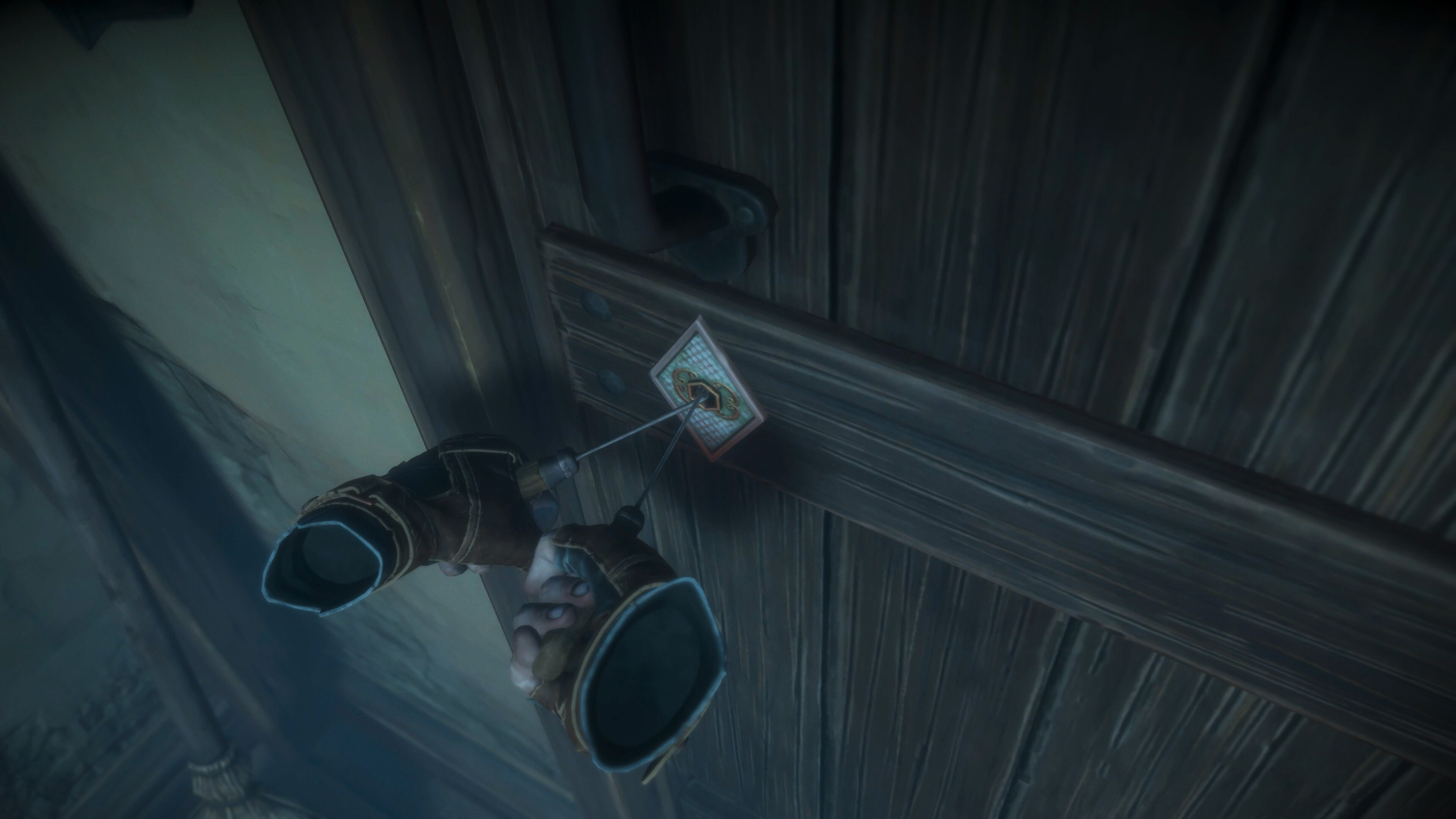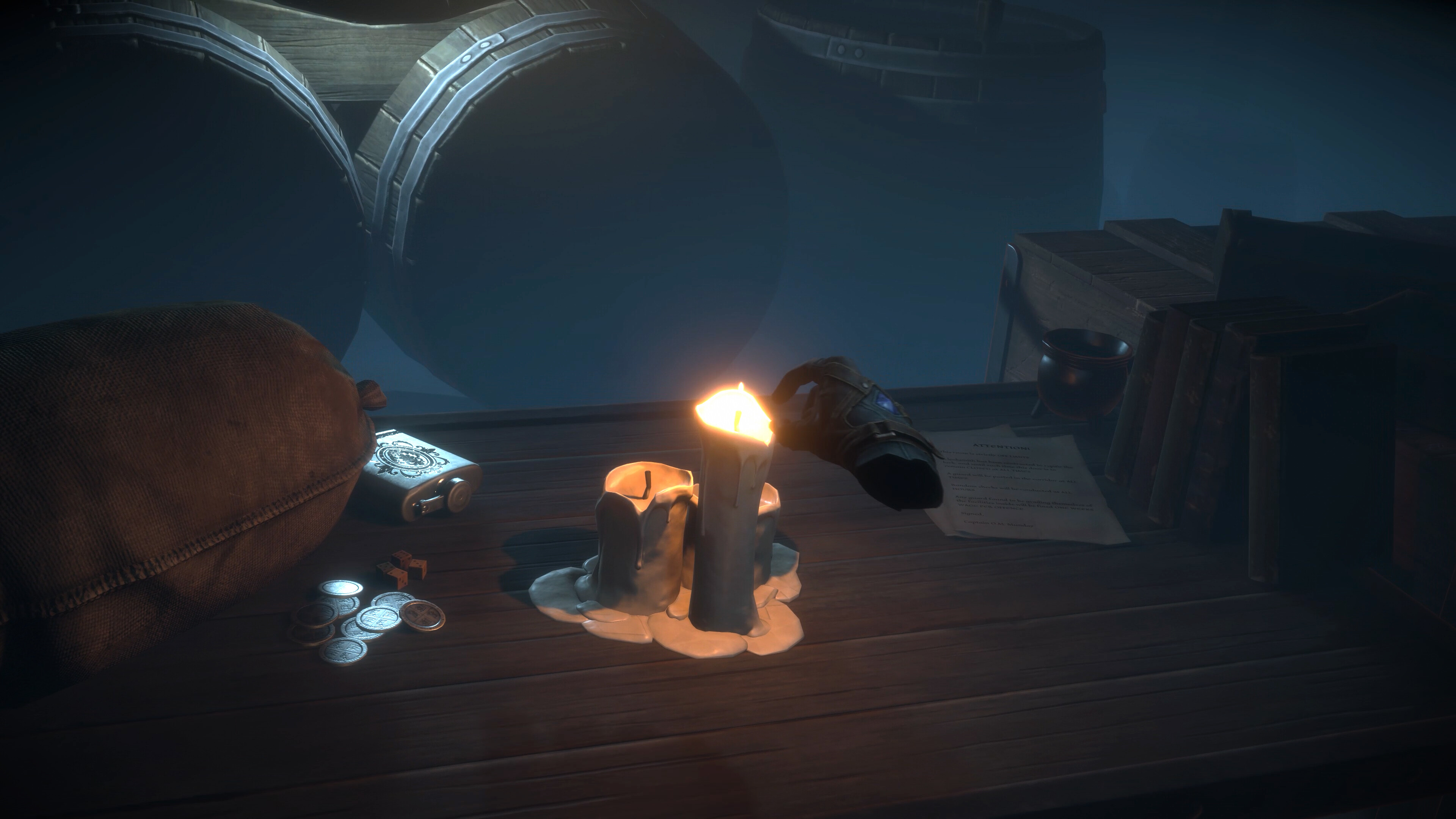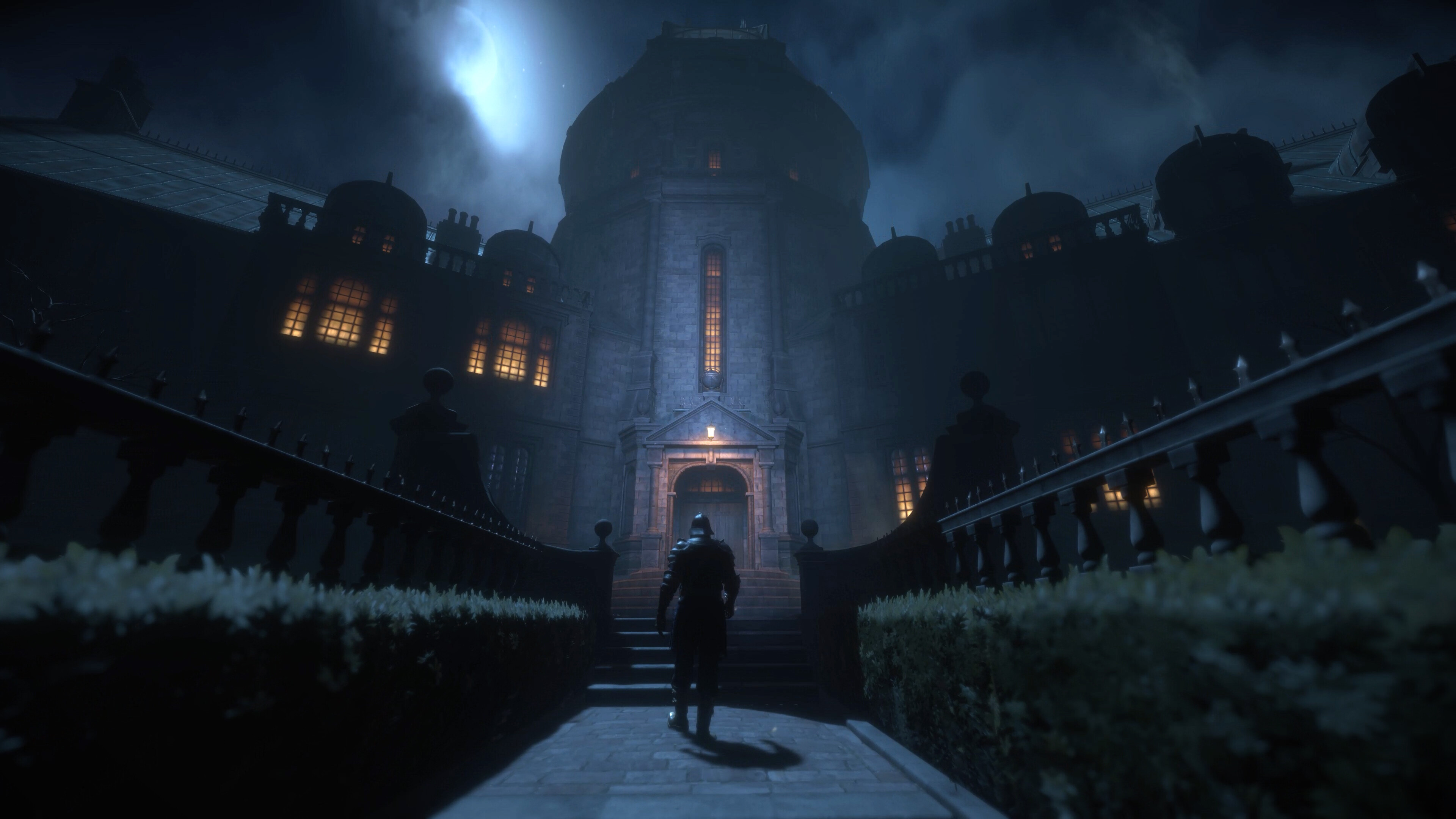
Instead of pressing Q and E to lean you can just, well, lean.
You’d think a genre with the word “immersive” in its name would obviously be a good match for virtual reality, but there haven’t been that many VR immersive sims. There was Vampire: The Masquerade – Justice and the Espire series, but mostly we’ve seen immersive sim-adjacent stuff like The Walking Dead: Saints & Sinners—games that take inspiration from immsim classics to spice up a regular shooter. (0452 games, basically.)
Sure, you could use vorpX to play games like System Shock or Dishonored in your VR headset. But if you want something new, your options are limited. Thief VR aims to fill that gap.
“VR is a natural fit for an immersive sim because it allows players to physically engage with the world around them”, says Eugenio Aguilar Oriani, lead publishing producer at Vertigo Games. “In Thief VR: Legacy of Shadow, classic elements from the series—like stealth-based gameplay, exploration, and the thrill of thieving—come to life through physical actions. Players must crouch, hide, and move through shadows to avoid detection, pick pockets with their own hands, and interact with the environment in tactile ways, from lockpicking to uncovering hidden switches behind picture frames or solving puzzles built into bookshelves.”
I’m intrigued by the lockpicking. While I don’t love the floating disembodied hands Thief VR has gone with, which are more jarring than fully modeled arms even when they turn into tangled spaghetti, I do like the idea of picking a lock with virtual lockpicks.
“The lockpicking mechanic has been fully designed for VR controls”, Oriani says. “Using both hands, you’ll need to carefully manipulate the pins to find the sweet spot. For maximum immersion, it’s possible to rely entirely on haptic feedback—but for those who prefer guidance, a UI-assisted option is also available.”

The trailer shows you can pick pockets as well as locks with your own physical hands, which looks like fun. I’m less enamored of the way it shows rope arrows working, with clear anchor points they can be shot into rather than just being able to twang one into any wooden surface you find. For me, immersive sims are all about inventing your own solutions rather than using ones you’re clearly supposed to. They’re games about stacking crates to climb walls, not shooting an arrow at the one square you’re allowed to shoot an arrow at.
Russ Harding, chief creative officer at developer Maze Theory, defends the decision. “We’ve integrated anchors into the environment in a way that feels natural and diegetic. You’ll need to read the space, stay alert, and think like a thief to find them. It’s a system that rewards observation and encourages vertical exploration. We believe the approach preserves the spirit of rope arrows—clever tools for those who take the time to look up, scout ahead, and plan their next move—while making traversal feel intuitive and comfortable in VR.”
The other thing that’s core to my interest in immersive sims, and the Thief series especially, is how tense they are. There’s the constant stress of trying to remain unseen, knowing how hard it is to fight your way out of situations if you go loud, but there’s also the way the Thief games include at least one level that’s right out of a horror game.
“I don’t want to spoil anything,” Oriani says, “but I can say that we didn’t set out to make a horror experience—that hasn’t been a core focus for us. That said, creepy supernatural elements are part of the Thief universe, and this is no exception.”
And this will be part of the Thief universe. While the 2014 reboot starred a new protagonist who was coincidentally called Garrett just like the protagonist of the original trilogy, there were hints that—rather than being a new setting—its version of the City was the same place hundreds of years in the future. Thief VR confirms this, as Harding explains.
“Thief VR is set roughly 200 years after the events of Deadly Shadows and 200 years before the events of the 2014 reboot. This gave us a unique space to develop: we’re not retelling the past or rewriting what came after, but instead creating a connective branch between two distinct timelines. Threading the needle between the original trilogy’s gothic, steampunk world and the more industrial, authoritarian tone of the reboot meant carefully considering how the City itself would evolve. You’ll see echoes of both eras in Thief VR, the decline of the Keepers, the shifting political landscape, even how glyph magic fades into myth.”
We won’t be playing another Garrett this time, though Stephen Russel has returned to voice his version of the master thief as a ghostly voice heard by Magpie, Thief VR’s brand new hero.
“You begin Thief VR as an ordinary street thief,” Harding says, “raw and unproven. But as the story unfolds, your actions shape your path toward becoming a master. That growth is part of the fantasy, and it reflects the arc fans loved in the original games, without simply repeating it. Of course, Garrett’s legacy still lingers. It’s in the tools, the City, and the history you’re stepping into. And while we won’t give too much away, let’s just say his voice and presence still significantly echoes throughout the game, and we’re honored to have Stephen Russell return to voice the character of Garrett. This approach allows us to honor the past while opening the door for new players. You don’t need to know the lore to get immersed, but if you do, you’ll find a world rich with callbacks, secrets, and connections worth stealing.”
Thief VR: Legacy of Shadow is due out this year, and will be available on Steam.






